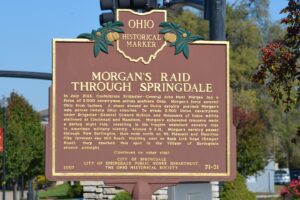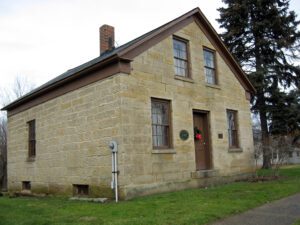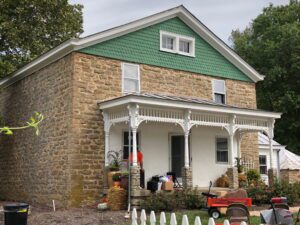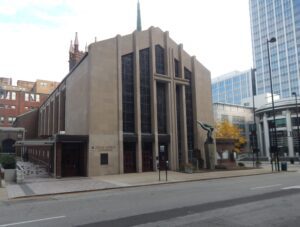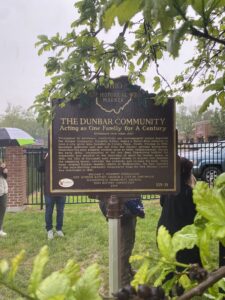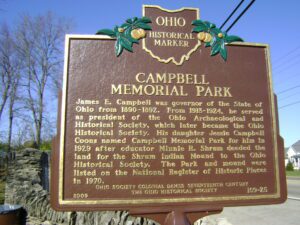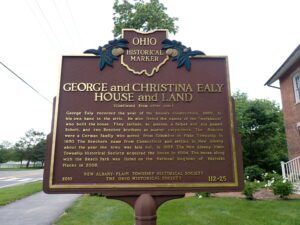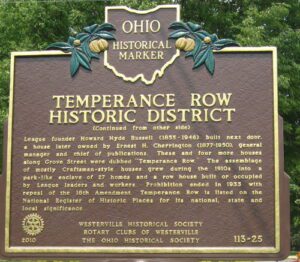, OH
In July 1863, Confederate Brigadier-General John Hunt Morgan led a force of 2,000 cavalrymen across southern Ohio. Morgan’s force entered Ohio from Indiana. A chase ensued as Union cavalry pursued Morgan’s men across twenty Ohio counties. To evade 2,500 Union cavalrymen under Brigadier-General Edward Hobson and thousands of Union militia stationed at Cincinnati and Hamilton, Morgan’s exhausted troopers made a daring night ride, resulting in the longest sustained cavalry ride in American military history. Around 9 P.M., Morgan’s cavalry passed through New Burlington, then rode north on Mt. Pleasant and Hamilton Pike (present day Mill Road). Heading east on Bank Lick Road (Kemper Road), they reached this spot in the Village of Springdale around midnight. (Continued on other side)
, OH
This rare sandstone house was built for Austin (c. 1788-1848) and Roxanna (Sears) Lilly (c. 1793-1868). They came to Dover Township (now Westlake) in 1832 from Ashfield, Massachusetts, an area from which many Dover settlers originated. This lot had been owned by Ozias and Hiram Smith. The Lillys erected this house in about 1844 and lived here until 1867. It is made with sandstone blocks two feet thick, finely tooled and dressed in the front and less elaborately on the sides and rear. The basement is constructed with massive rectangular stone blocks. Thick hewn timbers support the massive roof structure. A brick wing was attached to the east side in about 1850. After 1867, the lot and house had several owners, including George Weston, James Beardsley, and August Trudel. Eventually, Alice (Mrs. Dezso) Ladanyi, the great granddaughter of George Weston, deeded the house to the city of Westlake for use as a museum.
, OH
The Clark Stone House, constructed around 1801 by James Clark (1765-1852), is one of the oldest standing stone houses in Ohio. Clark, who served as a drummer in the Battle of Yorktown (1781), came with his family to Anderson Township in 1797 and bought this land along Clough Creek. Clark was a mathematician, taught school, ran a distillery, operated an orchard nursery and served as a justice of the peace, a judge, and a state legislator. The two-story dressed limestone house was sold to the Leuser family in 1864, was acquired by the related Messmer family in 1923, and sold to Anderson Township in 1995.
, OH
In 1817 twenty-two men, including future President William Henry Harrison, chartered Cincinnati’s first Episcopal parish, Christ Church. In 1835 members erected a Gothic Revival-style church on this site. The neighborhood evolved as the city grew with the influx of immigrants. Parish women raised funds to teach, feed, clothe, and shelter tenement families, and alleviate suffering during floods and disease outbreaks. In 1883 the women helped establish what became Cincinnati Children’s Hospital. In 1909 members opened the Late Gothic-style Parish House, a community center with kitchen, classrooms, library, auditorium, clinic, gymnasium, and bowling alley. By the parish’s centennial in 1917, music had expanded beyond worship to public concerts. In 1940 the annual Boar’s Head Festival of music and pageantry began. Since the 1960s, members have collaborated with local agencies to advocate for social and economic justice, a mission continuing into the 21st century. (Continued on other side)
, OH
Dunbar, or Corsica Hollow, was an African American neighborhood on the western edge of Madisonville. Its streets and lots were laid out in 1886 after Mahlon and Anna Leonard subdivided their 10-acre tract near Duck Creek and sold lots to African Americans. Many early Dunbar residents were from the South; some born there prior to emancipation. Prominent early citizens included Harriet Deatherage, Elihu Parks, Gandison Embry, Thomas Duett, and James Murphy. Dunbar was home to the New Mission Missionary Baptist Church, founded in 1907. Originally meeting in a one-room building, the extant congregation relocated to Ravenna Street in 1963. By the late 1920s, Dunbar had about forty houses, a grocery run by Henry Lowman, and a hair salon run by Flora Hector. (Continued on other side)
, OH
James E. Campbell was governor of the State of Ohio from 1890-1892. From 1913-1924, he served as president of the Ohio Archaeological and Historical Society, which later became the Ohio Historical Society. His daughter Jessie Campbell Coons named Campbell Memorial Park for him in 1929 after educator Minnie R. Shrum deeded the land for the Shrum Indian Mound to the Ohio Historical Society. The park and mound were listed on the National Register of Historic Places in 1970.
, OH
The George and Christina Ealy House is a testament to the prosperity of one of this area’s early residents and the skills of mid-nineteenth-century craftsmen. In 1830, members of the Ealy family moved from Pennsylvania to a 73-acre parcel where the house and six-acre Resch Park surrounding it are located. The Ealys were representative of a second wave of pioneers who settled Plain Township after 1812. The Ealys cleared land for farming and operated a sawmill on Rose Run. George prospered and in 1860 built this fine brick house. Architecturally, the house exhibits the transition between Greek Revival and Italianate styles. Its layout reflects the former; its proportions and decorative detail, the latter. (Continued on other side)
, OH
Here lived the reformers of the Anti-Saloon League of America who led the movement that turned the United States “dry” in 1920 with the 18th Amendment prohibiting the manufacture, sale or transportation of intoxicating liquor. Moving its headquarters to Westerville in 1909, the League built a publishing house that buried the liquor industry in a 10-year avalanche of books, pamphlets and periodicals that helped win Prohibition and made Westerville the “Dry Capital of the World.” Rev. Purley A. Baker (1858-1924), the League’s general superintendent, bought 11 acres and erected his rustic home at Park and Grove streets in 1910. (Continued other side)


